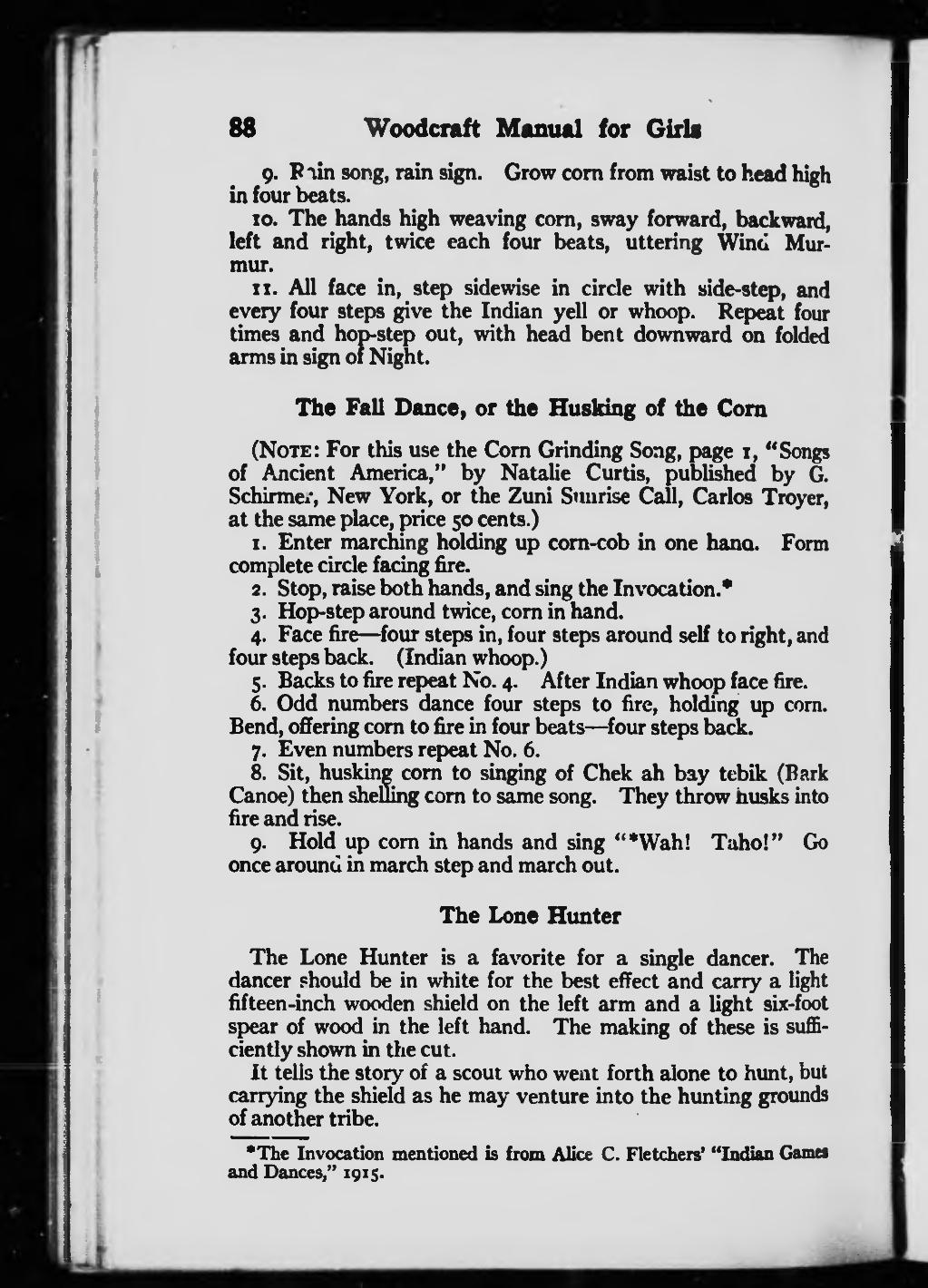88 Woodcraft Mamial for Oirli 9. Pnin song, rain sign. Grow com from waist to head high In four beats. 10. The hands high weaving com, sway forward, backward, left and right, twice each four beats, uttering Wind Mur- mur. 11. All face in, step sidewise in circle with side-step, and every four steps give the Indian yell or whoop. Repeat four times and hop-step out, with head bent downward on folded arms In sign of Night. The Fall Dance, or fh» HnaUng of tiie Com (Note: For this use the Com Grinding Song, page i, "Soms of Ancient America," by Natalie Curtis, published by G. Schirmer, New York, or the Zuni Sunrise Call, Carlos Troyer, at the same place, price 50 cents.) 1. Enter marching holding up corn-cob In <me hano. Farm complete circle facing fire. 2. Stop, raise both hands, and sing the Invocation.* 3. Hop-step around twice, corn in hand. 4. Face fire — ^four steps in, four steps around self to right, and four steps back. (Indiui whoop.) 5. Backs to fire repeat No. 4. After Indian whoop face fire. 6. Odd numbers dance four steps to fire, holding up com. Bend, offering com to fire in four beats — four steps back. 7. Even numbers repeat No. 6. 8. Sit, huskinz com to singing of Chek ah bay tebik (Bark Canoe) then shemng com to same song. They throw husks into fire and rise. 9. Hold up com in hands and sing "*Wah! Taho!" Go once around in march step and march out. The Lone Hunter The Lone Hunter is a favorite for a single dancer. The dancer should be in white for the best effect and carry a light fifteen-inch wooden shield on the left arm and a light six-foot spear of wood in the left hand. The making of these is suffi- ciently shown in the cut. It tells the story of a scout who went forth alone to himt, but carrying the shield as he may venture into the hunting grounds of another tribe.
- The Invocation mentioned is from Alice C. Fletchers' "Indian Games
and Dances," 1915.
